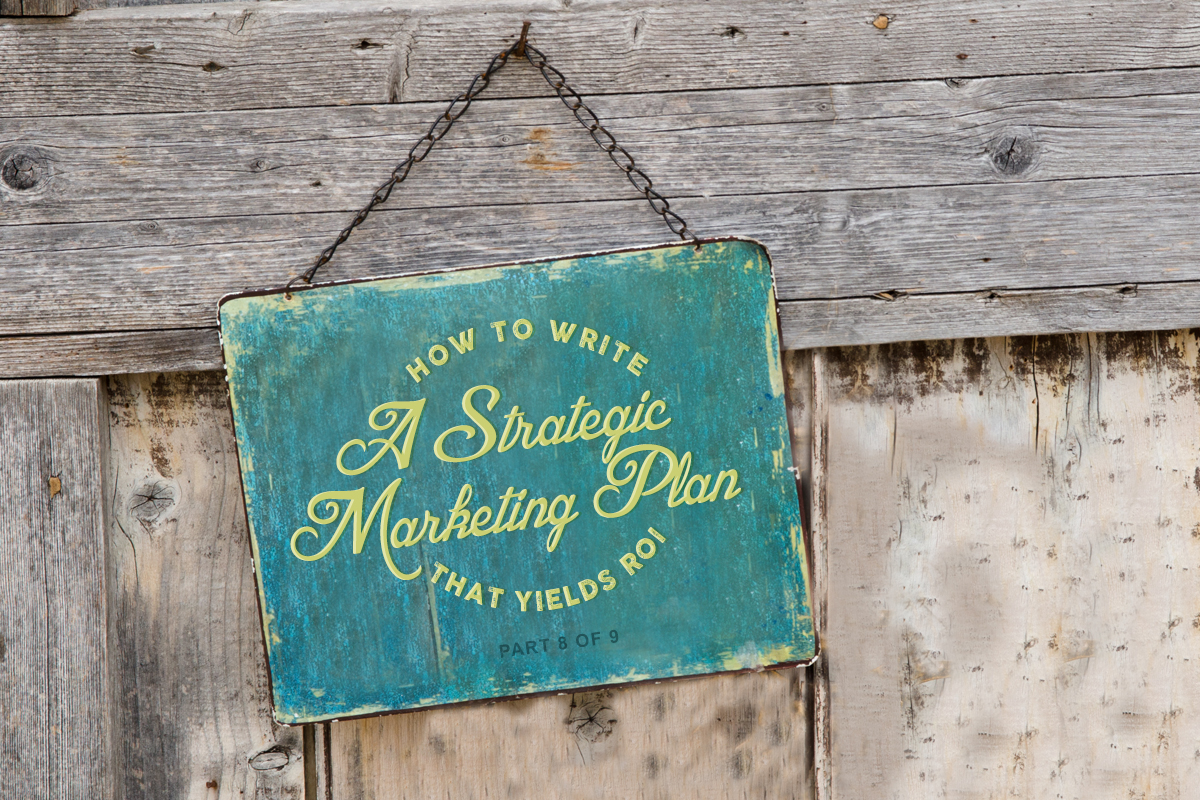
Concepting & Choosing Tactics
How-to Write a Strategic Marketing Plan that Yields ROI • Part 8 of 9
Contents
What is concepting?
Concepting is what everyone likes to do – coming up with the ideas to promote your organization. You’ll find everyone and their dog has ideas. However, what differentiates a good idea and a bad one is when an idea is backed up by strategy, purpose and supported with focused execution. This is why it’s important to do the concepting after all the research is done, followed by ensuring your concept fulfills all the goals you’ve laid out.
Approach to Concepting
A lot of the time, people jump into creating a concept way too early in the process. So, it’s important to evaluate the needs based on your annual goals (see previous blog). If you’ve decided you need a concept or campaign to help achieve your goals, this is the part of the process where you’ll establish it.
Concepts are great when coming up with ideas for promotional campaigns, launching new branding, products or services (this can include a new e-commerce website as well). It’s not as necessary for those that have a current campaign going that works and just needs refinement or needs faster turnaround with landing pages for PPC ads. If you don’t have a strong brand story or one that’s dated, it’s a good time to start devising a concept that will resonate with your target.
So now you’re ready to dive into brainstorms for new concepts. Here are some considerations to be aware of before you dive into the brainstorm.
Considerations
1. Target Influences – Look back at your targets and suss out the evidence as to where and how best to reach them. This will indicate the appropriate, trustworthy mediums to garner their attention. Who should you appeal to and not offend in the process as you may need their buy in if they were to choose you? When are they out of research mode and ready to buy? Are the buying cycles long or short? How do you shorten it with this concept and how do you ensure you’re in front of them when they are buying?
2. Key Message – As you create your concept, it’s important that it leverages the Key Message the best way possible. Sometimes concepts lose the key message. But good campaigns will utilize and highlight the key message in a way that’s not only memorable but embodies the concept.
3. Voluntary Engagement – We’re in the age where people are now sophisticated consumers. They’ve been exposed to marketing and advertising either the majority of their lives or their entire life. None of us like interruptive or noisy ads that force your attention. The best concepts are the ones where the audience voluntarily engages with your ad, and this can be done by creating an ad that resonates with your audience and creates value.
4. Authenticity – Not only are people seeking voluntary engagement, but they’re also seeking the no b*llsh*t approach. We’re all adults, life is not always 100% peachy, and many are really excited to embrace life fully whether it’s good or bad, so don’t be an annoying protective parent or a brainwashing teacher. Just be your proud, authentic self.
The Questions – For every brainstorm, we come up with a set of questions that the concepts or ideas must satisfy. These usually include some of the critical success factors, but also whether or not it appeals to your bullseye target demo. They have to be precise so it’s a clear yes or no. If there is a grey area for answering, then it’s not a good question to measure your concept against. Examples are “Would this get bullseye target to take action?”, “Does this engage at least 50 members?” or “Does this achieve our annual goal more than the other concepts?”
Who should be involved
It’s important to have your marketing team in this portion of the process. However, if you do not have a large marketing team, have the key frontline staff and managers in this one. Especially any individuals who have been leading the Marketing Plan process as they’ll be briefing and providing the context and parameters.
We usually have an average of 3 brainstorm sessions before we solidify a good concept. This ranges greatly. Start with a brainstorm where all the ideas are shared without judgement or criticism. After these ideas are exhausted, explore each one by humouring the concepts until you feel it’s exhausted. Then axe any concepts that don’t bode well with the question list. Narrow it down to the top 3-5 concepts. From that point on, we try to add and refine the concepts to ensure they answer the questions well.
After you’ve chosen your concept, it’s now time to choose which mediums reach your audience the best. Remember, it’s not about what the concept fits with the best, it’s the other way around. The aim is to have a concept you know will resonate with the audience and reaches them. We ensure this by developing a good concept and then delivering it on the mediums that reach them best.
MEDIUMS
There are a million options – paid, unpaid, earned, organic, traditional, digital and the list goes on and on. How do you know which mediums to choose? The simple answer is, what is your bullseye target reading, watching, listening to and engaging with? Those are the mediums and avenues you should be utilizing. Now, which is the most authentic, least noisy and suitable medium for your concept?
Our personal thoughts on media buying aim to maximize our ROI with whatever budget the client has. Naturally, if you have a limited budget, we often start off with digital because its targeted and it can build and track followers. If you have a small-medium sized advertising budget, then we may look at adding one affordable traditional medium such as bus ads, radio ads and explore mediums that have a lot of high-level hits – which don’t have a huge tracking ability, but we know it hits a broad range of people.
We wouldn’t explore TV or print unless you have at least a million dollars to invest in advertising, as that would include a range. The higher end budgets are usually a various combination of advertising mediums. It’s never only traditional unless you’re looking at Superbowl ads etc.
A general rule of thumb is to, at the very least, try and hit your target at least 7 times across 3 mediums depending on the sales cycle, seasonality, urgency and goals.
THE GOAL OF THE CONCEPT
What helps us achieve award winning results is the commitment to the clear link between the vision, 5-year goal, annual goals, value prop, target, key message and measurement which is embodied & reflected in the chosen concept.
As you may know, the execution is a huge aspect of a campaign’s success. By having the team understand the goals and strategy of the plan, this will empower each individual involved in the execution of the plan to understand what decisions to make to help contribute to the greater goal. The success of the campaign concept relies heavily on the monitoring and adjustment of the campaign to ultimately reach the campaign goals.
Check out all our posts in this series!
 |  |
 |  |
 |  |
 |  |
 |






